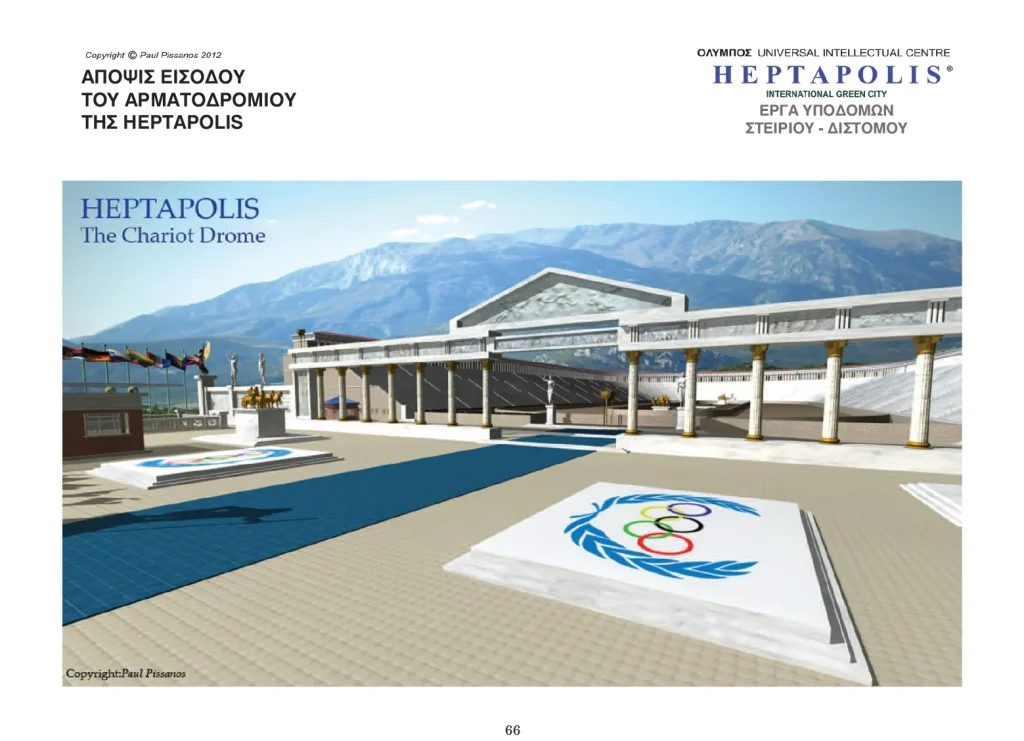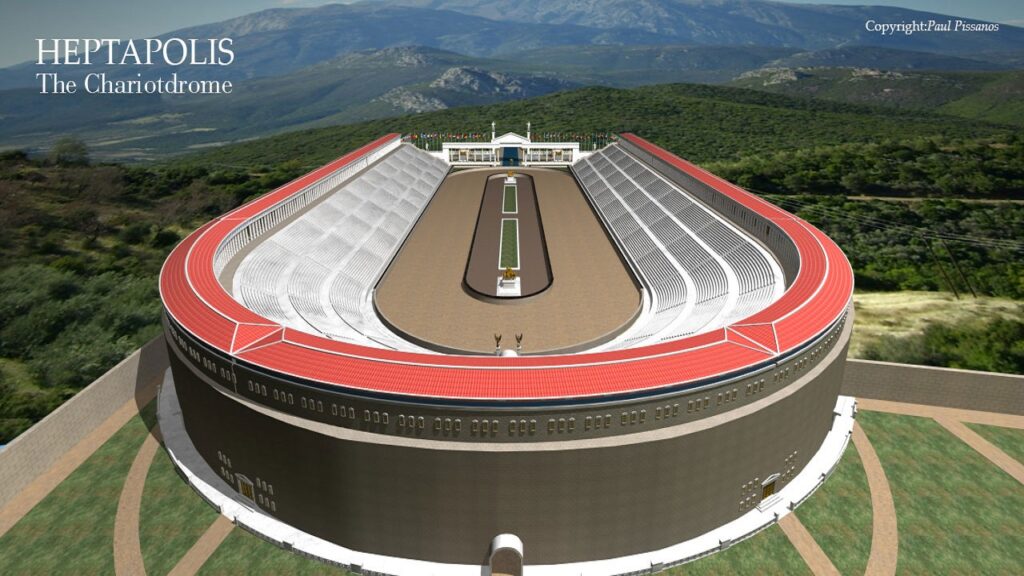Chariotdrome

The Chariotdrome and the horse stable, within the framework of the Heptapolis – Trilogy project, is planned to be built on the southern side of the village of Sterion, alongside the wider area of Distomo.
Horse races in ancient Greece took place during the Olympic Games of antiquity as well as in other Panhellenic events such as the Pythia or the Nemea. Chariot races were organized in ancient Greece for the first time in 680 BC, when the duration of the races was lengthened to allow time for new events, such as horse races, which were soon abolished. The winners were not considered to be the riders of the chariots but the owners who were also the ones who received the cotinus of victory.
The Chariotdrome was divided horizontally into 2 corridors by a stone or wooden divider, the piston.
The horses and chariots that participated in the games followed the circular route around the piston to the east, while the number of circles performed by the charioteers varied depending on the event.
The competition area was surrounded by natural and artificial mounds for the spectators, while the Hellanodikes supervised the games from the western side of the northern mound.
The release and the finish of the horses were defined by the presence of posts, while a smaller post called nyssa was located at the turns of the stadium.
Opposite the Nyssa there was the Taraxippos, a kind of altar which may have been related to the position of the sunset which made it difficult for the riders and horses to see during the race.

Sponsors of the Chariotdrome
In the context of reviving the Spirit of the Olympic Games of Antiquity and with commitment to the “Racing Idea” that developed in the Classical Greek world, especially in the period of the 5th century B.C., the HEPTAPOLIS scholars compiled a program of monthly and annual chariot races, with professional chariots and charioteers in a model arena, the “HEPTAPOLIS Chariotdrome”, on the South side of Polis.
The CHARIOTDROME with a capacity of up to 60. 000 spectators, with provision of infrastructure works for the accommodation of visitors, with an organized horse stable, a training department for charioteers, a chariot construction department, a chariot storage department with a museum area in which trophies, cotins and winning chariots will be kept, with dormitories and residences for the permanent charioteers and trainers, the Chariot Ground will be a modern “model of fan behaviour” for the smooth conduct of any kind of competition, in a stadium with a large number of spectators.
The CHARIOTDROME will have marble grandstands, for officials who will honour the races with their presence, special grandstands for sponsors who contributed to the building of the Stadium, and sponsors of the future who will finance part or all of the cost of each chariot race.
In the top grandstand of the Stadium, there will be a Lodge whose spaces will belong to the Sponsors. The names of the Sponsors will be listed on the HEPTAPOLIS website on a special page, while the Major, Gold and Silver Sponsors will be listed on engraved marble plaques.









